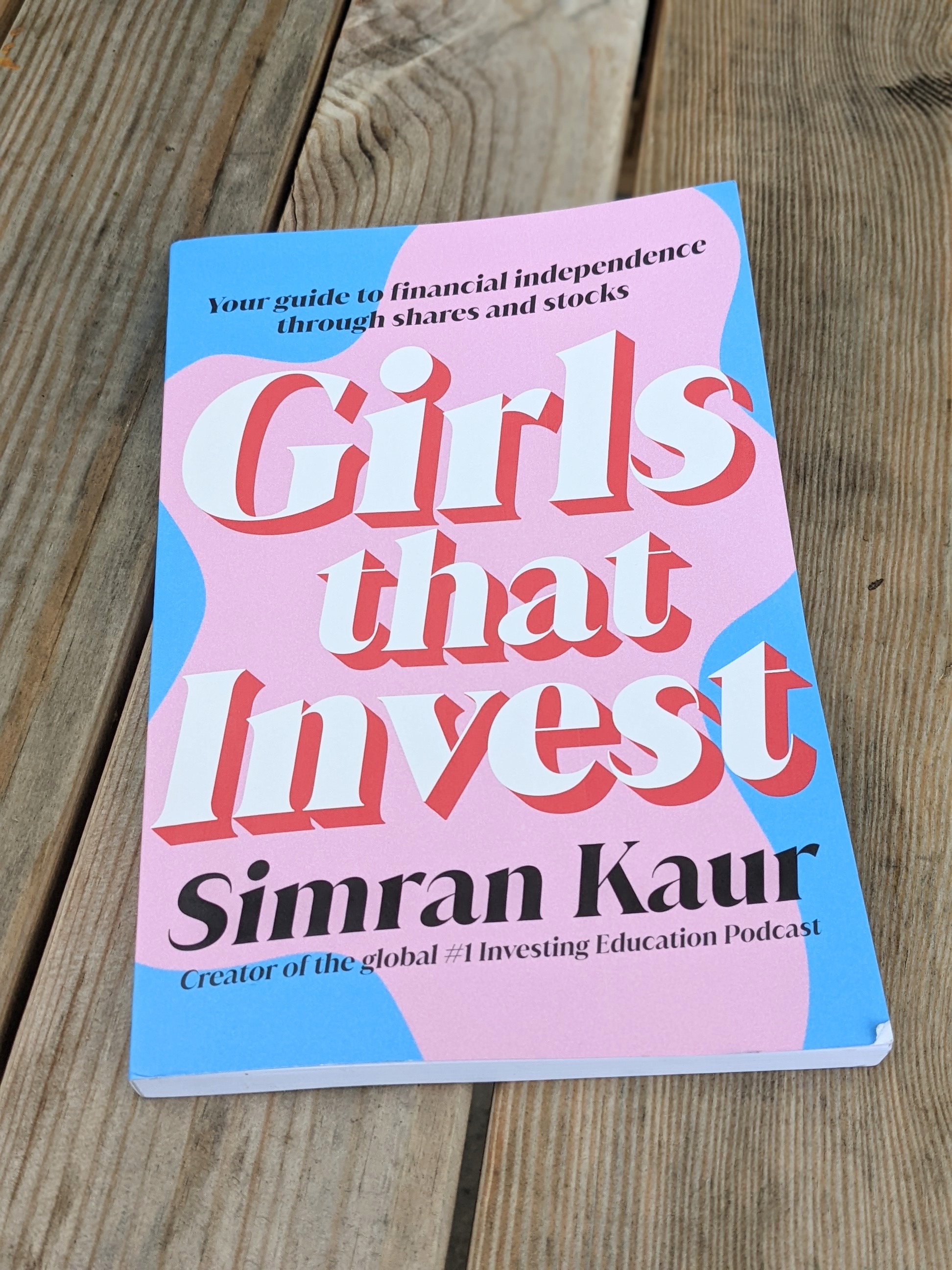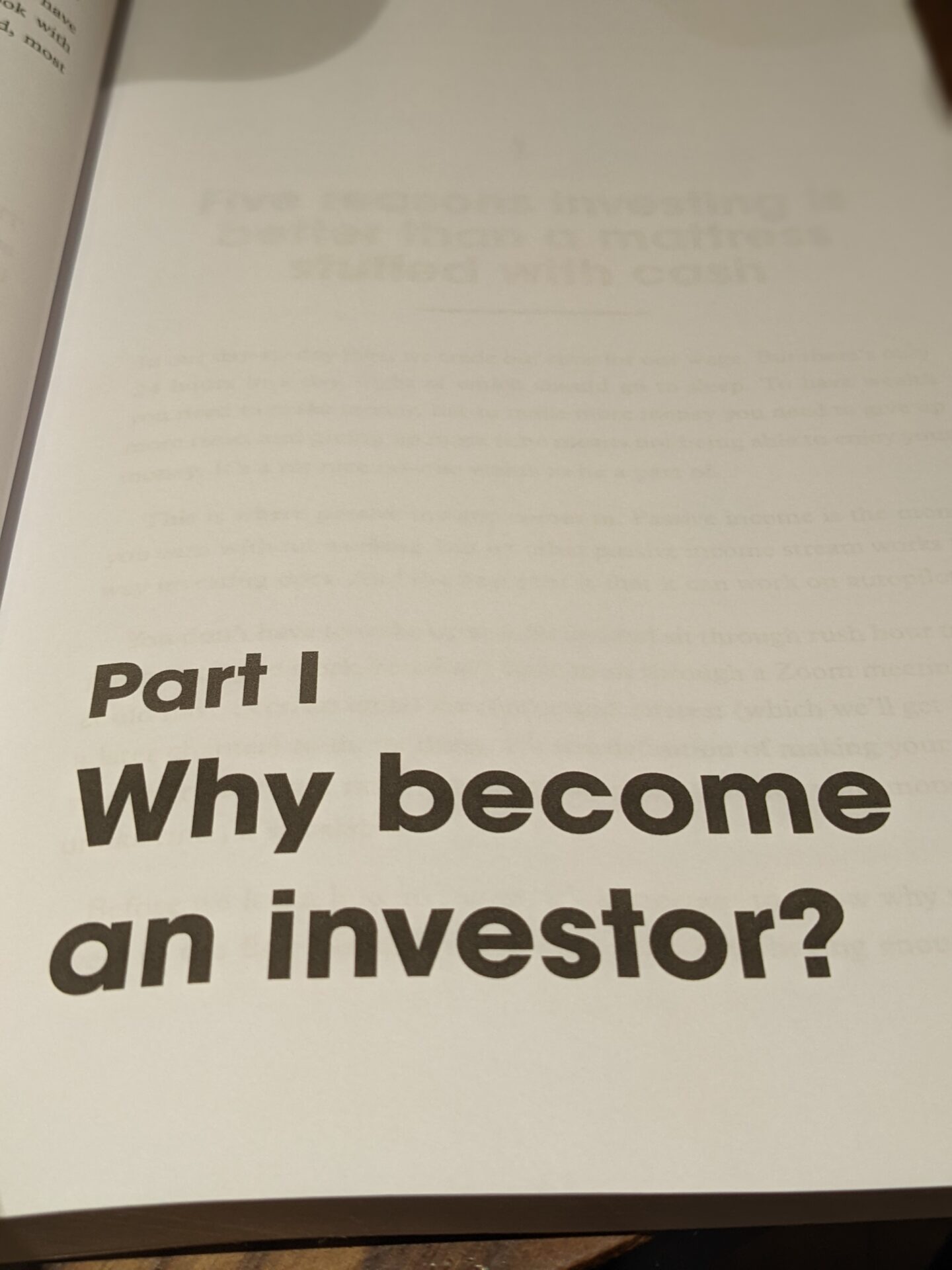
As a young black woman who grew up in a working-class home, the finance industry has always felt intimidating. When I was 9-years-old, my best friend and I would hold jumble sales in her front garden and I loved going to the local car boot sale on a Sunday morning to sell items that my parents and I no longer needed. Exchanging cash gave me a buzz. However Maths was my weakest subject in high school and we were never taught about how to manage money, let alone invest. I never saw a black face behind the counter in a bank and I remember once returning to my home country of South Africa after apartheid and how my mum made a big deal about seeing a black bank manager there.
So, as you can imagine, I quickly realised that this wasn’t a space for someone like me and going into employment meant that I never felt confident asking for a pay rise, as I didn’t have any negotiating skills.
Girls That Invest by Simran Kaur is a guide to financial independence through shares and stocks. It’s the book that young me should’ve had access to in high school and when I started out in paid employment. New-Zealand born Simran is a financial columnist, international TEDx speaker, and founded Girls That Invest, a financial podcast aimed at increasing financial literacy for women and minorities across the world.

Simran’s aim is to educate women well enough for them to gain financial freedom and independence. A family member recently said to me “Women should have their own money” and she is right. So many women stay trapped in relationships or careers that they hate because staying where they are is more comfortable financially.
Simran tells her story of growing up as a child who was inquisitive about stocks and shares while telling herself that she wasn’t good with numbers or that it could never be for her as that industry was for rich men in expensive suits. The mainstream media has always portrayed the trading floor as being full of middle-aged white men with the only visible women being attractive PAs or girlfriends/mistresses.
What I loved about this book is that Simran digs deep into the root of why women, especially minorities, have never felt welcome in the financial industry. We learn about how, in the 1700s in the US and UK, husbands had complete control of any property a woman brought into the marriage, and even as recently as the 1950s, women in India weren’t allowed to control property. Up until the 1960s and 1970s, women weren’t able to open up a bank account. In all honesty, even now, women are still trying to find their feet in a space reserved for men.
A topic which Simran discusses is the shame around talking about money. Women are seen as arrogant or crass when we talk about money, whereas men are celebrated and told that they are motivating others, they are encouraged to ask for pay rises and are encouraged to invest. Money mindset is a popular topic in the mindset coaching industry that I am in and all too often I see female coaches being picked apart on social media for talking about how to increase wealth and achieve £5-10k months, whereas male coaches don’t get the same level of criticism.
In Simran’s words, when we stay silent about money, we make it harder for women and minorities to be paid more and even how to negotiate
I loved the layout of this guide. It is broken down into various sections with my favourites below.

Part 1: Why become an investor. The guide to inflation is helpful, as are the various role-play-style examples. There are also graphs which are helpful for visual learners like myself. There is also an actionable steps section which journal-style prompts which has been for me in terms of reflecting on why financial security is important to me. With the cost of living going up this is a good way to feel more in control of your personal finances.
Part 5: What’s your type (of investment)? This covers different styles of investments, including stocks/shares and index funds and goes into detail on each.
Part 8: The Ethical Investor. This was my favourite section. I joined Starling bank a few years ago for ethical reasons, but I’ll be honest, that is as far as I’ve gone when it comes to ethical banking, so I enjoyed this particular guide and this is something I will use going forward in my ethical banking journey.
Simran has written a really great guide which doesn’t use too many fancy jargons. I found it simple to follow even with my limited experience of the finance industry. The risk profile towards the end of the guide is helpful and the guide overall has made me realise that I’m not bad with numbers at all. I, just as many other women have never had access to financial literacy or education.